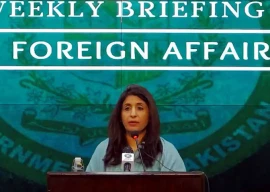
South China Sea connects the maritime world of Persian Gulf, Middle East, commercial water body of Indian Ocean and the subcontinent with North East Asia. Energy-rich South China Sea in geopolitical terms is arguably the most important and critical geographic space in the world today. There is no doubt that it has become the principal node of the great power politics in the world. This is due to the result of the great economic rise of the Asian continent from the 70s decade and which has continued through the decades of the 21st century. China headed the speed with which Asian economy grew and set new standards of economic rise for the Asian states. As a global power China beat both the US and Great Britain in the timeframe in which it doubled its per capita income. Great Britain took three decades to double its per capita income during the period of industrial revolution, the US took five decades doing the same following its civil war but China accomplished this feat in just one decade. No wonder today, the sheer size of China’s geography, economy and demography enables it to extend influence and control both in South China and East China Seas. But today I want to write about geopolitics around South China Sea and the Chinese grand strategy to dominate and control South China Sea as its sphere of influence. How is China doing this?
There is a historical precedence. The Monroe doctrine enabled America to dominate, influence and control the Great Caribbean. The doctrine was not about colonising the Caribbean Islands, nor was it about subjugating the people. It was only to ensure that the European powers stayed away from them. Great Britain had military bases in Trinadad, Guinea, Honduras and Jamica but it avoided challenging the Americans and abdicated. Thus, the US created its own ‘American Mediterranean’ that it policed as its owner. The US considered the Great Caribbean as the maritime extension of American continent and a geographic space that needed to become an essential part of its security environment — its so-called sphere of influence. As students of international relations, we must understand that only after the US had become a power and ruled the western hemisphere that it ventured out to become a global power. Greater Caribbean gave the US the much needed political and economic security to start building the 82km artificial waterway, the Panama Canal, to connect the Atlantic with the Pacific Ocean. This construction of the canal was of huge strategic significance for America as it connected its eastern coasts in Atlantic to its western coasts in the Pacific. The canal shortened the maritime distance between America’s eastern and western coasts by about 1,300km.
In a similar fashion, the Xi doctrine today enables China to dominate, influence and control the South China Sea. What China is doing in the eastern hemisphere is what America did earlier in the western hemisphere. In other words, a rising global power is replicating the achievement of a declining global power on the path that leads it to become a global hegemon. For the US it was all about controlling the western hemisphere first and then controlling the world. China is exactly doing the same. Like the British Empire that had military bases in the Great Caribbean, today the US has military bases in countries around South China Sea, like the Philippines and Vietnam, and even South Korea and Japan towards the East China Sea. China also seeks to make South China Sea part of a security environment that it influences and controls. The American economic rise gave birth to its military rise and hence enabled it to become a hegemon in the western hemisphere. In South China Sea the matter is little complicated as it is not just China but many East Asian States that have experienced economic rise and the accompanying military rise. So, almost all the littoral states are engaging in an arms race. Their military purchases include the sub-surface and surface warships as well as ballistic and cruise missiles and air defence systems. So, China, unlike the US, doesn’t want these states to submit to it, all it wants is that they respect its nine-dash line and restrict to their Exclusive Economic Zones that fall outside this line. China is not ready to discuss the maritime boundary conflicts at the ASEAN forum and is open to discussion on the basis of bilateralism. So, in the world that is fast transitioning to multipolarity, China in South China Sea is ready to encounter an era of military multipolarity in which all these states should exercise influence and control over their resources using their indigenous means and military; respect China as a regional hegemon; and not collaborate with outside powers like the US to interfere and stake maritime claims in the region. This leads us to determine what exactly is China’s grand strategy in the South China Sea?
For China, South China Sea provides natural security to the south. This geographic space is part of China’s great anti-access strategy. Put simply, the Chinese strategy is to keep the US sea and air forces away from its coasts. South China Sea enables China to have access to the large deposits of oil and natural gas, thus making it less dependent on the Middle Eastern energy. But the strategy becomes a grand strategy when one links it with what China wants to achieve through CPEC and Pakistan’s Gwadar Port. Quite similar to what America achieved with the construction of Panama Canal, China wants a similar achievement through the completion of CPEC which is a flagship project of its BRI. China seeks to connect the western part of China through Gwadar and as long as that project is not completed China will keep South China Sea under close guard and under its military watch.
For China, domination and control of South China Sea is not something that it sees from a moral, principle, ethical or nationalist lens. Domination and control of South China Sea for China is a strategic necessity and it is strategic response to how it views the US creeping into Asia through its pivot-Asia Pacific policy.
I am amazed about how oblivious is the leadership in Pakistan of the role it has to play in the Chinese grand strategy. Is the US pushing Pakistan away from Chinese influence? Pakistan needs on an urgent basis a truly people’s elected parliament and a visionary leader to debate many strategic questions that need immediate attention and debate.
Published in The Express Tribune, May 5th, 2024.
Like Opinion & Editorial on Facebook, follow @ETOpEd on Twitter to receive all updates on all our daily pieces.





























COMMENTS
Comments are moderated and generally will be posted if they are on-topic and not abusive.
For more information, please see our Comments FAQ